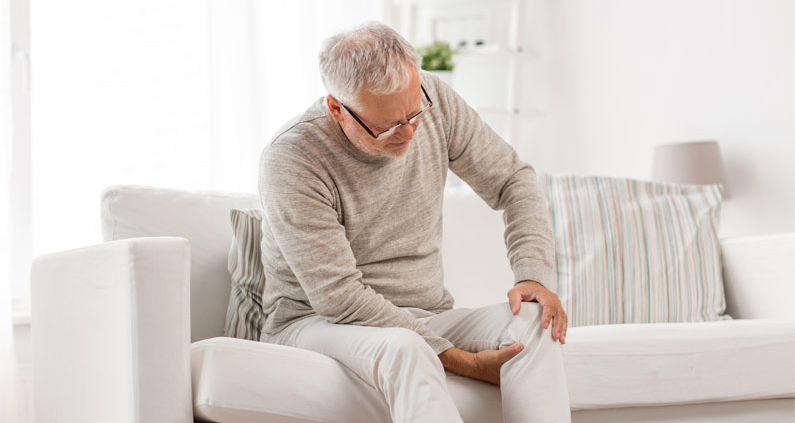Still Active Over Age 40? 5 Tips to Prevent Injuries and Chronic Pain
As you age, you suffer more injuries, aches, and pains. Staying active helps keep your body strong and injury-free. But if you don’t take steps to do it safely, it can also be a source of injuries and pain.
Below are some tips for avoiding common injuries and chronic pain in five vulnerable areas of the body.
1. Lower Back
Potential Injury: Running, jumping, falling, lifting, crouching, and other physical demands of sports can easily overextend the spine and injure the lower back. Exercises that strengthen the core can prevent lower back pain.
Sitting too much can decondition the abdominal and gluteal muscles, putting added pressure on the spinal column.
Prevention: Carefully performed yoga and abdominal exercises can build up the abs and strengthen the lower back.
Before playing sports, do stretches such as the child’s pose, knee-to-chest, and piriformis to loosen the lower back. Stretching the lower back helps prevent strain.
2. Kneecap (meniscus)
Potential injury: As people age, injured and achy knees resulting from wear and tear on the meniscus, the main ligament in the knee located under the kneecap, is more common.
Age-related tissue degeneration, such as cartilage breakdown resulting from fluid loss, increases the risk of meniscus strains and tears.
Prevention: Weight-bearing exercises using technically-sound exercise form strengthens the knee area and decrease the risk of injury.
3. Rotator Cuff
Potential injury: The most injury-prone area in the shoulder is the group of muscles and tendons known as the rotator cuff.
Rotator cuff tendonitis is common. It occurs when the muscles and tendons of the rotator cuff become inflamed from overuse.
Though not as common, rotator cuff tears are more severe injuries than tendonitis and may require surgery to repair.
Prevention: Stretching exercises with and without resistance bands help to add flexibility and strength. Weight-bearing exercises build muscle but also come with injury risk.
Practicing correct form and having sufficient recovery time between training sessions lowers injury risk.
4. Hamstring
Potential injury: The dreaded pulled and torn hamstring. Aging weekend and seasonal athletes know all about it.
Preventing it: Taking time to warm up and stretch the legs and hamstrings before participating in sports will reduce the risk of hamstring pulls and tears.
Strength training exercises like squats and lunges performed with correct form and plenty of rest in-between training sessions will also help prevent injury.
5. Elbow
Potential injury: Tennis elbow, or elbow tendinitis, is characterized by burning pain in the elbow joint and weakened grip strength. It’s a common condition that affects non-tennis players, too.
Performing any repetitive motion long enough, such as throwing a football, propelling forward with ski polls, or using a computer mouse, can cause it.
Prevention: Avoid making repetitive hand and arm movements, if possible. To relieve strain on the shoulder muscles, use the elbow and forearm tendons whenever possible.
Texas Pain Physicians Treatment
Are you an injured, 40+ weekend or seasonal athlete?
Whether it’s sore knees, achy tennis elbow, or a torn meniscus, our board-certified pain management doctors will work out a treatment plan tailored to you.
Give us a call at (972) 636-5727 or book an appointment online today!




